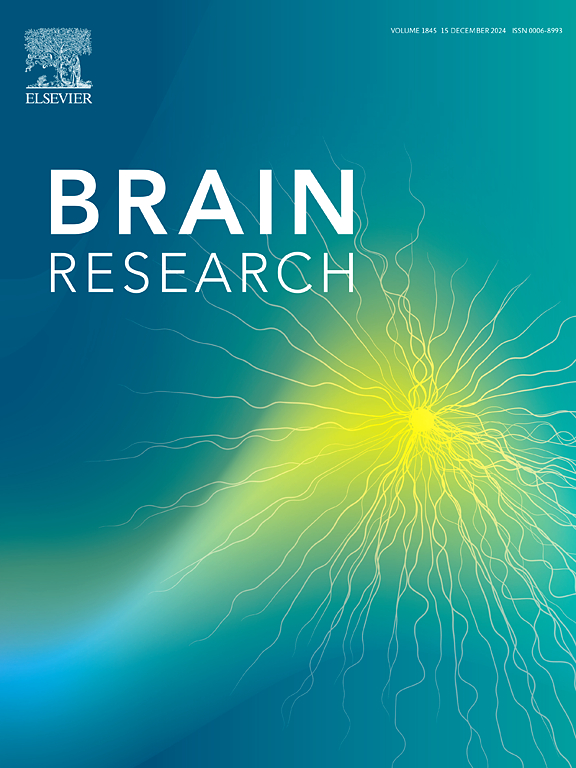探索MGAT2与胶质母细胞瘤之间的关系:孟德尔随机化和生物信息学方法。
IF 2.7
4区 医学
Q3 NEUROSCIENCES
引用次数: 0
摘要
背景:甘露糖糖蛋白β -1,2- n -乙酰氨基葡萄糖转移酶2 (MGAT2)及肿瘤相关研究近年来正如日中天。因此,我们采用孟德尔随机化(MR)和生物信息学来彻底研究MGAT2和胶质母细胞瘤(GBM)之间可能的关系。方法:我们利用MGAT2 (N = 35,559来自deCODE)和胶质母细胞瘤(N = 379,155来自FinnGen)的全基因组关联研究(GWAS)的汇总统计。MR用于评估MGAT2与GBM之间的因果关系。利用生物信息学对MGAT2与GBM之间的关系进行了更深入的探讨。结果:MR分析显示了因果关系,显示MGAT2水平升高与GBM风险增加相关(OR = 2.59, 95 % CI: 1.13-5.91, p = 0.023)。进一步研究发现MGAT2在正常组织、肿瘤组织和不同类型胶质瘤中的表达存在显著差异。此外,我们发现MGAT2可能通过免疫相关途径影响GBM,特别是通过巨噬细胞的作用。与MGAT2相关的蛋白也在PPI网络中被鉴定出来。结论:本研究首次验证了MGAT2与胶质母细胞瘤之间的因果关系,并利用生物信息学从多个角度探讨了两者之间的关系。此外,我们提出了进一步研究的假设,以调查这种联系的潜在机制。本文章由计算机程序翻译,如有差异,请以英文原文为准。

Exploring the relationship between MGAT2 and glioblastoma: A Mendelian Randomization and bioinformatics approach
Background
Mannosyl-glycoprotein beta-1,2-N-acetylglucosaminyltransferase 2 (MGAT2) and tumors’ relevant research was in full swing recently. Therefore, we employed Mendelian Randomization (MR) alongside bioinformatics to thoroughly investigate the possible relationship between MGAT2 and glioblastoma (GBM).
Methods
We utilized the summary statistics of genome-wide association studies (GWAS) for MGAT2 (N = 35,559 from deCODE) and glioblastoma (N = 379,155 from FinnGen). MR was used to assess the causal relationship between MGAT2 and GBM. Bioinformatics was used for a more in-depth exploration of the relationship between MGAT2 and GBM.
Results
MR analysis demonstrated a causal relationship, showing that elevated levels of MGAT2 are associated with an increased risk of GBM (OR = 2.59, 95 % CI: 1.13–5.91, p = 0.023). Further investigation revealed significant differences in MGAT2 expression across normal tissue, tumor tissue, and gliomas of different types. Additionally, we found that MGAT2 may influence GBM through immune-related pathways, particularly through the role of macrophages. Proteins associated with MGAT2 were also identified in the PPI network.
Conclusion
This study first validated the causal relationship between MGAT2 and glioblastoma, and used bioinformatics to explore the relationship from multiple perspectives. Additionally, we proposed hypotheses for further research to investigate the potential mechanisms underlying this connection.
求助全文
通过发布文献求助,成功后即可免费获取论文全文。
去求助
来源期刊

Brain Research
医学-神经科学
CiteScore
5.90
自引率
3.40%
发文量
268
审稿时长
47 days
期刊介绍:
An international multidisciplinary journal devoted to fundamental research in the brain sciences.
Brain Research publishes papers reporting interdisciplinary investigations of nervous system structure and function that are of general interest to the international community of neuroscientists. As is evident from the journals name, its scope is broad, ranging from cellular and molecular studies through systems neuroscience, cognition and disease. Invited reviews are also published; suggestions for and inquiries about potential reviews are welcomed.
With the appearance of the final issue of the 2011 subscription, Vol. 67/1-2 (24 June 2011), Brain Research Reviews has ceased publication as a distinct journal separate from Brain Research. Review articles accepted for Brain Research are now published in that journal.
 求助内容:
求助内容: 应助结果提醒方式:
应助结果提醒方式:


